Twilight Princess: A Deep Dive into Its Legacy


Intro
The Legend of Zelda: Twilight Princess firmly asserts itself as a significant juncture in gaming history, marking a turning point for the beloved franchise. Its debut on the GameCube was not just a game release; it was a cultural phenomenon. Developed during a time when gaming was evolving rapidly, Twilight Princess stepped up with remarkable narrative depth and gameplay mechanics that were as innovative as they were engaging.
In this exploration, we will dissect the layers of Twilight Princess, diving into its rich storytelling, character dynamics, and the unique gameplay that keeps it alive in the hearts of gamers even today. What made this title a landmark moment in the franchise? What are the mechanisms behind its memorable quests and characters? The answers lie beneath the surface of gameplay features and design, and we are here to dig them out.
Game Reviews
With Twilight Princess, each review seemed to echo similar sentiments: a perfect blend of engaging story, immersive world, and innovative gameplay that redefined adventure titles. Critics praised its darker tone, which struck a chord with many long-time Zelda fans. It was a shift from the more vibrant aesthetic of its predecessors, echoing a narrative complexity that appealed to a slightly older audience. As we venture into this section, we can explore the critical reception, delving deeper into what elements caused the game to resonate strongly with both players and critics alike.
Gameplay Features and Mechanics
Twilight Princess introduced several gameplay mechanics that distinguished it from earlier Zelda installations. It incorporated a heavy reliance on puzzles integrated into the world’s layout, using the environment to challenge players in clever ways. For instance, the Wolf Link transformation was a bold step toward offering players a unique gameplay experience in navigating Hyrule's sprawling landscapes. The game’s combat system, which included a mix of swordplay and useful items, encouraged strategic engagement rather than mere button mashing.
"Twilight Princess was not just a game; it was an emotional journey, shaping the player experiences in ways that resonated far beyond the screen."
Storyline and Quests
The narrative of Twilight Princess unfolds with an intricate depth that feels organic rather than forced. Link’s evolution from a humble villager into the heroic figure of Hyrule weaves a tale enriched with themes of courage, sacrifice, and the legacy of light versus darkness. Side quests are not mere distractions; they add layers to a knotty plot while fleshing out the world with rich lore and character interactions.
Visuals and Sound Design
Visually, Twilight Princess marked a significant evolution in the series. The art direction embraced a more mature design, with sharp contrasts and a darker atmosphere that drew players into its world. The sound design played a crucial role too, with a haunting score that complemented the visuals, immersing players into the unfolding drama. Not just background noise, the music expertly guided emotions and highlighted the gravitas of pivotal moments within the game.
Comparison with Previous Titles
When held up against its predecessors, Twilight Princess showcased not just subtle improvements but bold strides towards modernity in gameplay and narrative depth. It combined elements from various past games, synergizing what players loved while pushing boundaries that invited new exploration. Compared to The Wind Waker's whimsical nature, the tone of Twilight Princess offered a complex moral landscape, accentuating the franchise's adaptability and growth over time.
Character Analyses
At the heart of Twilight Princess lies a cast of characters that brings the story to life. From the stoic sensibility of Link to the enigmatic presence of Midna, each character serves a purpose that extends well beyond their appearance. To truly appreciate the game, one needs to understand these characters deeply—both their arcs and significance to the overarching narrative.
Popular Characters Overview
- Link: The quintessential hero whose development is crucial to the storyline.
- Princess Zelda: Offers wisdom yet reveals layers of vulnerability as darkness encroaches on Hyrule.
- Midna: Acts not just as a sidekick but as a representation of the twilight itself, marking her dual nature as crucial to the narrative.
Character Development and Backstories
Through gameplay and dialogue, players witness the growth of each character. Midna’s gradual shift from aloofness to alliance epitomizes the theme of redemption. Link’s struggle against evil is not merely physical but emotional, reflecting a growth that underpins his role as a hero in the Zelda franchise.
Role in the Zelda Universe
The characters in Twilight Princess contribute significantly to their standing in the Zelda canon. Midna, in particular, departed from typical sidekick roles, introducing new dynamics into heroism, loyalty, and sacrifice. This complexity added depth to the character interactions, ensuring they linger in the minds of players long after the credits rolled.
Fan Theories and Speculations
The lore surrounding Twilight Princess has not gone unnoticed among the gaming community, fueling a plethora of fan theories. Some speculate on connections to earlier titles or deeper meanings behind the Shadow Realm, while others wonder about Midna’s origins and the implications of her choices throughout the journey. These theories not only enrich the player experience but also showcase the engaged community surrounding the game.
Lore Discussions
The rich tapestry that is the world of Twilight Princess is woven with lore and mythology. Engaging with these elements paints a broader picture of Hyrule and its vibrant history.
Mythology and Worldbuilding
The game intricately builds upon existing lore, drawing influences from various mythologies that resonate with players. The juxtaposition of light and dark, prevalent in many cultures, is explored faithfully, enriching the world with a compelling philosophy.
Legendary Items and Artifacts
Throughout Twilight Princess, players encounter artifacts steeped in significance. The Master Sword, returning in its nearly fabled form, represents not just a weapon but embodies hope. The fused shadows and their effects are another element that ties deeply with the storyline, representing both power and peril.
Link to Real-world Mythologies
There are strong parallels between the game and mythological tales from around the world. For example, the duality of Midna reflects various cultural narratives about balance and transformation, echoing long-established storytelling traditions.
Timeline Placement and Theories
The placing of Twilight Princess within the Zelda timeline is often debated amongst fans, with theories attempting to pinpoint its exact placement in relation to other titles. Understanding where it fits within the overall saga adds another layer of appreciation for its complex narrative.
Gameplay Strategies
Engaging with Twilight Princess requires patience and strategic thinking. Players often find themselves deep in combat or puzzles, needing a comprehensive understanding of mechanics to navigate challenges effectively.
Combat Techniques and Tips
Combat in Twilight Princess pushes players to think strategically rather than rely solely on skill. Utilizing Link’s diverse set of attacks and items can turn the tide in challenging battles, particularly against formidable foes. Mastering timing and positioning often proves vital for successful engagements.
Puzzle Solutions and Walkthroughs
The game is replete with challenges that make players scratch their heads. Solutions tend to require cleverness and often involve the environment. Whether it's utilizing Link's items or leveraging the surroundings, each puzzle offers a unique learning experience, essential for progression.
Collectibles and Side Quest Guides
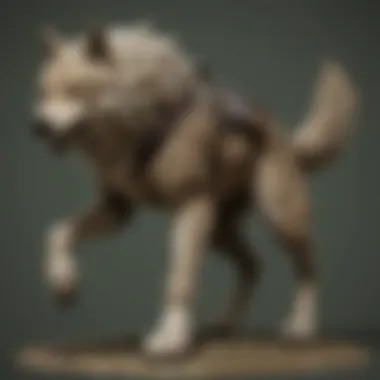

Gathering every collectible can significantly enhance the gameplay experience. Side quests, besides offering rewards, deepen the lore and character understanding, giving completionists ample incentive to explore every nook and cranny Hyrule has to offer.
Boss Battles Tactics and Strategies
Boss battles are not simply tests of strength but are often puzzles in themselves. Each requires a different approach, leveraging learned combat skills and environmental cues. Understanding their patterns allows players to anticipate moves and craft winning strategies.
Through this exploration, we peel back the layers of Twilight Princess, showcasing its unique contributions to gaming, both as an entry in the Zelda franchise and as a standalone narrative. More than just a title, it remains a vital chapter in the evolving story of video games.
Prologue to Twilight Princess
The arrival of Twilight Princess marked a significant moment in the Legend of Zelda franchise. Its development and unique qualities have resonated deeply with fans ever since. In this section, we will explore the foundational importance of Twilight Princess. Not only does it serve as a bridge between the traditional elements fans cherish and innovations that push the boundaries of gaming, but it also stands tall as a narrative pillar in the series.
Overview of the Legend of Zelda Series
The Legend of Zelda series has cemented its place as one of the titans of video gaming. Launched in 1986, it introduced players to a rich world filled with adventure, puzzles, and unforgettable characters. Each installment has its own unique storyline and gameplay mechanics, yet they all share common threads.
By being immersive, emotionally engaging, and vast in scope, the series has captivated audiences for decades. From The Legend of Zelda: Ocarina of Time to Majora’s Mask, the franchise has constantly evolved while maintaining a core identity centered around Link and his quest to save Princess Zelda.
It has mixed fantasy elements with innovative gameplay that other series often attempt to replicate but rarely succeed. This creates a framework where Twilight Princess could thrive. Within this framework, Twilight Princess stands apart through its depth of narrative and darker undertones, which made it appealing to both long-time fans and newcomers.
The Legacy of Twilight Princess
Twilight Princess, released for the GameCube in 2006, has often been seen as a defining title within the Zelda canon. The game isn't just a follow-up; rather, it's a vivid exploration of darker themes and complex character arcs. What truly sets it apart is its ability to resonate with personal growth and moral dilemmas, presenting choices with weight and consequence.
Furthermore, the game’s art style reflected a shift in direction for the series. Its more realistic approach captivated critics and fans alike, marking a departure from the cel-shaded style of The Wind Waker. The environments, from the lush fields of Hyrule to the haunting depths of the Twilight Realm, were not mere backdrops but integral to the story itself.
"The game encapsulates the duality of light and shadow which enhances the journey that Link undertakes, transforming the landscape of gaming narratives."
Beyond its art and narrative, Twilight Princess has influenced the mechanics found in subsequent titles. Elements like horseback combat, fluid stealth systems, and immersive world-building became templates for later installments. Its legacy continues to persist as a constant point of reference for discussions around game design, storytelling, and character development in modern gaming.
In summary, Twilight Princess holds a unique place not only in the history of the Zelda series but also in the broader context of video game culture. Its release changed expectations for what a video game could accomplish, both as a form of entertainment and as a storytelling medium.
Development of Twilight Princess
The development of Twilight Princess plays a crucial role in understanding its impact within the Legend of Zelda franchise. The process not only shaped the game’s narrative and visuals but also introduced revolutionary gameplay mechanics that have resonated with players year after year. Developers had to navigate a tangled web of expectations from fans while pushing the envelope of what was technically possible on the GameCube. By exploring the multifaceted development journey, we can appreciate the thoughtful decisions that contributed to the game’s lasting legacy.
Initial Concept and Vision
When brainstorming the initial concept for Twilight Princess, the creators sought to balance the light-hearted whimsy found in earlier titles with a darker, more mature atmosphere. The desire to explore themes such as courage, sacrifice, and the struggle between good and evil was prominent. This was the first time in the series that Link transformed into a wolf, a mechanic that was not just a gimmick, but rather a means to deepen gameplay and storytelling.
Through captivating environments and narrative arcs, the goal was to create a world that felt vast and immersive. During early discussions, designers sought to imitate the epic scope of The Lord of the Rings, giving players a sense of adventure and peril. This vision married well with the aesthetics of the game, where lush landscapes stood in stark contrast to shadowy regions.
Overall, the initial concept laid the groundwork for what would become a darker, gritty rendition of Zelda.
Artistic Direction and Design Choices
The artistic direction of Twilight Princess was one marked by contrast and depth. Unlike its immediate predecessor, The Wind Waker, which embraced a cel-shaded style, Twilight Princess aimed for a more realistic and mature aesthetic. Careful consideration went into the character designs, with each denizen of Hyrule crafted to reflect individual cultures and histories.
Every shadow and light played a significant role in establishing the game’s mood. For instance, while exploring the illuminated Faron Woods, players were met with a lively atmosphere, which sharply contrasted to the foreboding Twilight Realm. This dichotomy was not just for looks; it symbolized the ongoing battle between light and dark, a central theme of the game.
Additionally, Twilight Princess incorporated rich textures and bold colors, showcasing a strong commitment to realism that had not been fully realized in prior entries. Characters like Ganondorf and Midna were designed intricately, each with backstories that contributed to their complex motivations and deepened the narrative experience.
Technological Advancements and Challenges
Embarking on the development journey for Twilight Princess, the team faced numerous technological hurdles. The GameCube was a platform still exploring capabilities, and the developers pushed it to its limits. The incorporation of realistic animations, improved physics, and optimized AI made the game feel alive.
One notable example of technical achievement was the seamless transition between wolf and human forms. This mechanic required an underlying code structure that permitted dynamic changes mid-gameplay, a challenge that had not been managed effectively in previous titles.
However, the journey wasn't without its bumps. The transition from an earlier build intended for the GameCube to a later release on the Wii posed significant challenges, requiring adjustments to gameplay mechanics and controls to suit different hardware capabilities. Yet, these hurdles proved to be stepping stones toward a more cohesive gaming experience, ultimately enriching the end product.
In recounting these advancements and struggles, it highlights a narrative not just of a game but of a pioneering moment in gaming history, where imagination met technical know-how.
"The development of Twilight Princess was not merely about creating a game but rather about crafting an experience that would resonate through generations."
Through these explorations of Twilight Princess's development, it’s clear that each choice and challenge faced by the creators played an integral part in forming the game's identity. From ambitious concepts to painstaking artistic choices to technological innovation, the development of Twilight Princess is a saga worthy of both appreciation and analysis.
Narrative Analysis
Understanding the narrative in Twilight Princess is essential to grasping its emotional weight and thematic significance. The storytelling in this installment of the Legend of Zelda series is multifaceted, weaving together complex character arcs and moral dilemmas within a richly developed world. This analysis delves into the broader implications of the plot and themes, highlighting how the narrative intertwines with the gameplay, ultimately enhancing the player's experience.
Plot Overview
Twilight Princess unfolds against a backdrop of despair and a creeping twilight that threatens to consume Hyrule. The story launches with Link, the game's protagonist, initially leading a simple life as a ranch hand in Ordon Village. However, his journey takes a dramatic turn when twilight engulfs his homeland, transforming familiar landscapes into shadowy realms and altering the natural order.
As Link's adventure unfolds, he is swept into a battle against the sinister forces of Zant, the antagonist, who seeks to usurp the power of the Princess Zelda and plunge the kingdom into eternal darkness. Along the way, Link gains the ability to transform into a wolf, a mechanic that drives both the gameplay and the narrative. This shift symbolizes a loss of identity and innocence, as Link's quest requires him to embrace both his human and his wolf forms, representing the duality of his journey.
The narrative does not shy away from exploring deeper philosophical themes. It probes into concepts such as sacrifice, the struggle between light and dark, and the price of power. Each character Link encounters, from his companions to the enemies he faces, adds layers to this narrative, each embodying different facets of these themes.
Themes of Darkness and Light
At the heart of Twilight Princess lies the profound contrast between darkness and light, serving as a primary driving force behind its narrative. The game illustrates how darkness can corrupt and consume, as seen through the transformation of Hyrule under Zant's rule. Yet, it also emphasizes that hope and redemption are always within reach, embodied by Princess Zelda and the spirit of the slain goats bringing back fragments of light.
This interplay between shadow and illumination is not merely aesthetic; it resonates with the player's emotional experience. Players are often caught in a struggle against overwhelming odds, reflecting the broader themes of existential challenge in the face of despair. Characters such as Midna, who initially appears as a morally ambiguous ally, reveal her complexity as the story unfolds. Her character arc embodies the journey from vengeance to forgiveness, shedding light on the notion that darkness can be redeemed through sacrifice and understanding.
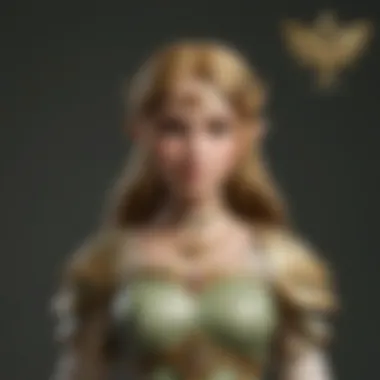
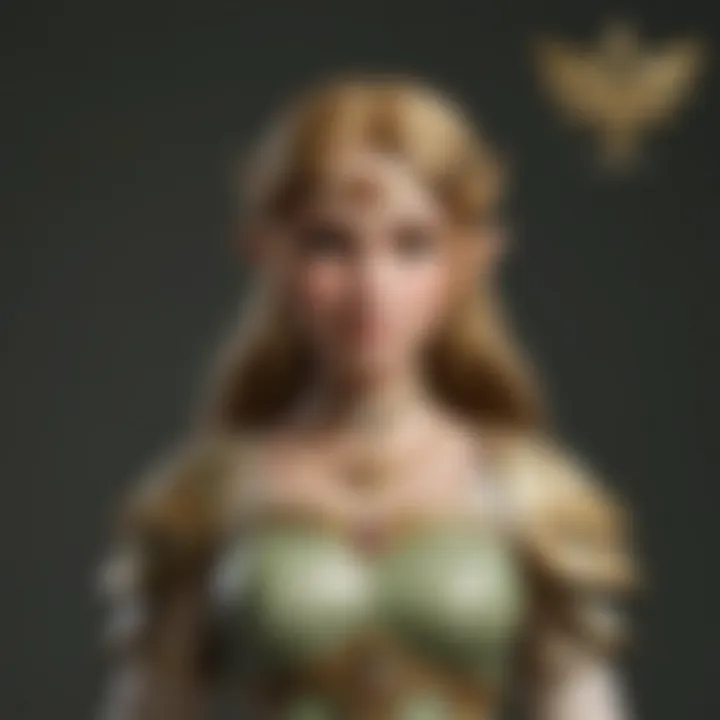
"In Twilight Princess, the contrast between light and darkness not only shapes the aesthetic of the world but also serves as a metaphor for the player's internal struggle."
Character Development and Relationships
The depth of character development in Twilight Princess is noteworthy, with Link, Midna, and Zelda experiencing significant growth throughout the narrative. Link, traditionally seen as a silent hero, begins the game as a naive villager. However, through trials and tribulations, he becomes a warrior burdened by the weight of his destiny. Every battle and loss shapes him, casting him in a more intricate light.
In parallel, Midna is a standout character, evolving from an enigmatic and often disdainful companion into a figure of empathy and sacrifice. Her dynamic with Link illustrates themes of trust and betrayal, as she must reconcile her motives for seeking vengeance against those that wronged her people with the burgeoning bond they develop. This relationship is pivotal as it humanizes the journey, making their quest resonate on a personal level with players.
Zelda, too, serves as more than mere royalty; she is a symbol of resilience and hope. By portraying her in a more active role, the game dismantles the trope of the damsel in distress. Her character showcases the importance of agency, reinforcing the narrative's depth.
In summary, Twilight Princess presents a narrative rich in exploration of moral complexity, personal sacrifice, and the enduring struggle between light and dark. The characters' development and their intertwined relationships add significant weight to the story, setting the game apart as not only a remarkable entry in the Legend of Zelda series but also as an insightful commentary on the human condition itself.
Gameplay Mechanics
The gameplay mechanics of Twilight Princess are fundamental to its enduring legacy within the Legend of Zelda franchise. They not only serve as the backbone of the player's experience but also enhance the game's artistic, narrative, and emotional depth. Understanding these mechanics helps to appreciate how they contribute to the game’s overall design and enjoyment, making each encounter more than just an obstacle to overcome; instead, they weave the very fabric of Hyrule’s storytelling.
Exploration and Environment Interaction
In Twilight Princess, exploration isn't just about moving from one point to another. The vast, immersive world of Hyrule invites players to engage deeply with their surroundings. Players can engage in various activities, from climbing trees to using a boomerang to disturb the environment. There's a sense of wonder when stumbling upon hidden locations like the serene Kakariko Village, where players might find a side quest or a piece of heart hidden just beyond sight.
- Environmental Integration: The game's environments are multilayered, encouraging players to think creatively. For example, using Link's ability to transform into a wolf opens up new paths and interactions, providing a fresh perspective and unique approaches to problem-solving.
- Dynamic Engagement: Simple tasks, like smashing crates or pulling levers, allow players to feel more connected to the world. Each action has a purpose, making exploration not merely about reaching goals, but about experiencing the story through interaction.
This melding of gameplay and environmental interaction creates a tapestry of discovery that is rewarding and keeps players coming back for more.
Combat Systems and Strategy
Combat in Twilight Princess stands as a prime example of how mechanics can develop both tension and excitement. The game offers a robust fighting system that requires players to employ various strategies based on enemy types. Foes range from the straightforward to the more intricate, demanding adaptability.
- Complex Combat Mechanics: Combat involves a mixture of swordplay, archery, and unique abilities tied to the forms Link takes. The inclusion of the targeting system, with Lock-On mechanic, allows for precision while emphasizing timing and positioning.
- Strategic Diversification: Players learn to assess situations quickly. The enemies have specific strengths and weaknesses, encouraging experimentation with different weapons and items. For instance, using bombs against a heavily armored enemy can be far more effective than relying on melee attacks alone.
The balance between complex mechanics and intuitive design ensures that both novices and veterans find satisfaction. Every encounter requires distinct strategies that can turn the tide of battle, emphasizing the importance of player skills over mere button-mashing.
Puzzle Design and Player Engagement
Puzzles in Twilight Princess are elegantly woven into the fabric of the game, acting as both challenges and gateways that propel the story. They require players to engage thoughtfully with their surroundings, often leading to profound "aha" moments.
- Integrated Challenges: Many puzzles are tied directly to the environment. For example, using Link's transformation into a wolf might be necessary to solve a riddle or unlock a door. This integration connects puzzle solving with exploration, amplifying the game’s richness.
- Variety and Complexity: The design varies from simple lever pulling to intricate lighting puzzles, ensuring that players remain engaged without feeling overwhelmed. This thoughtful pacing maintains a level of engagement, encouraging players to think critically without detracting from the narrative flow.
As players navigate these puzzles, they not only unlock new areas but also peel back the layers of Hyrule’s lore, enriching their understanding of the world.
Art Style and Music
The art style and music of Twilight Princess are not just complementary elements; they are foundational to the game’s atmosphere and emotional weight. The carefully crafted visuals and the poignant score weave together to create an immersive experience that resonates deeply with players. These aspects do more than beautify the game; they serve as a pathway into the story and a force that drives its themes.
Visual Aesthetics and Inspirations
The visual design of Twilight Princess stands as a testament to the artistic evolution within the Legend of Zelda series. Developers drew inspiration from various sources, channeling darker themes and more realistic character designs than prior titles. The game’s palette, laden with earthy tones and shadows, perfectly echoes the narrative's exploration of light versus darkness.
Places like Hyrule Field are artistically rendered to give players a sense of vastness and adventure, marked by both desolate areas and lush landscapes. The character designs, particularly for Link and Zelda, show a maturity that reflects their critical roles in the unfolding drama. The environments, from the claustrophobic depths of dungeons to the sprawling vistas above Hyrule, converge to create a uniquely engaging world.
Furthermore, the architecture and motifs found throughout various realms draw heavily from real-world cultures, embedding the game within a rich tapestry of inspiration. This melding of influences fosters an experience that feels both fresh and familiar, engaging players on multiple levels.
Significantly, the stylistic choices made during Twilight Princess are linked to its thematic undertones. The darker visual tone encapsulates a world in turmoil, making it clear that the journey through this universe will be fraught with peril and moral questions. In essence, the aesthetics are not a mere backdrop but an integral narrative device.
Musical Composition and Impact
The score of Twilight Princess, composed by Toru Minegishi and Asuka Ohta, significantly impacts gameplay and storytelling. Each piece is meticulously crafted to evoke emotions corresponding with the storyline, enhancing the player's connection to the world and its characters. For instance, when Link transforms into his wolf form, the music shifts, embodying both the primal nature of the transformation and the deeper connections to the game's lore.
Key themes, such as the iconic song while traversing Hyrule Field, embody a sense of longing and adventure. Each note lingers in memory, solidifying its place in the wider Zelda musical canon. The use of orchestration elevates these themes, combining traditional melodies with modern arrangements to create something both timeless and innovative.
Another noteworthy point is how Twilight Princess utilizes silence strategically. In moments of tension or reflection, the absence of music speaks volumes, allowing players to absorb the weight of the narrative. The contrast between lush soundscapes and haunting quiet moments contributes to a well-rounded auditory experience.
"The music and visuals in Twilight Princess work in tandem, instilling a sense of wonder and depth that sets it apart in the realm of gaming.”
Reception and Impact
The reception and impact of Twilight Princess is crucial to understanding its significance in the Legend of Zelda franchise and its wider implications in the gaming world. Examining how the game was received sheds light on its critical acclaim as well as the responses from fans, highlighting the multidimensional effects it had upon release and in later years.
Critical Acclaim and Awards
Upon release, Twilight Princess was showered with praises from critics and players alike. Its combination of rich storytelling and innovative gameplay redefined what players could expect from action-adventure titles.
- Some noted that the atmospheric environments filled with intricate details drew players into a world that felt alive and immersive.
- The combat system received accolades for being engaging and strategic, with critics commending the game's ability to blend traditional Zelda mechanics with new ideas.
Many prestigious gaming outlets, such as IGN and GameSpot, awarded the game numerous accolades, including "Game of the Year" titles. It even bagged awards for best graphics and sound design. Across various award shows, Twilight Princess consistently rose to the top, solidifying its status as a landmark title.
"Twilight Princess captures the essence of everything that makes Zelda special, evolving the formula while respecting its roots." - Video Game Review Expert
Fan Reception and Cultural Impact
The community reception of Twilight Princess was equally enthusiastic. Many loyal fans viewed it as a return to form, resonating deeply with the darker tones and complex themes that had been somewhat absent in previous entries. Online forums, namely Reddit and dedicated Zelda fan sites, showcased a vibrant culture where players shared experiences, strategies, and theories about the game’s intricate lore.
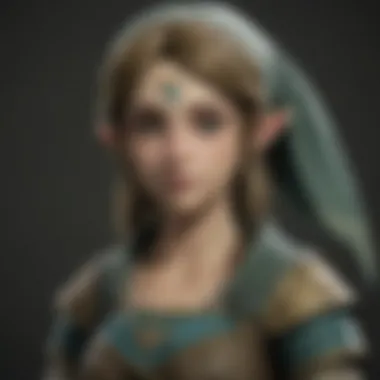
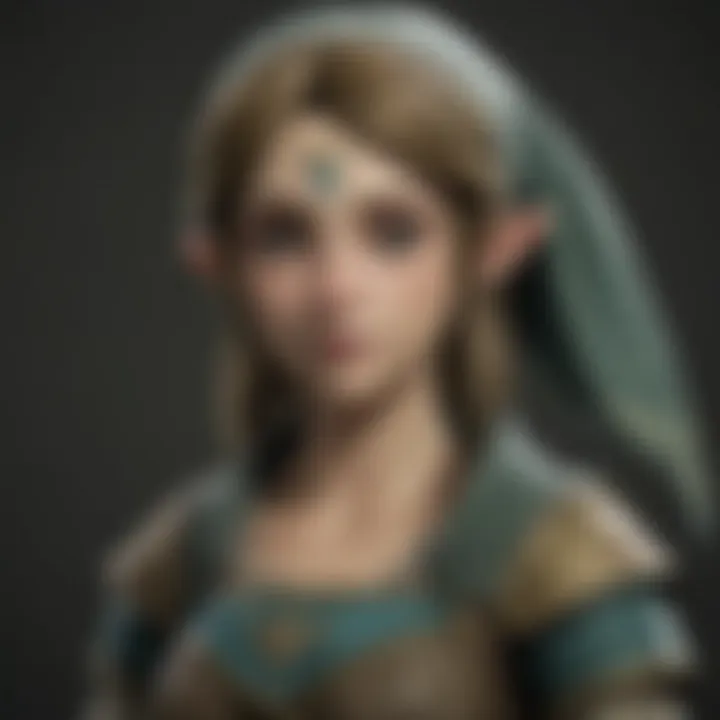
- Players appreciated the emotional weight behind characters like Midna and Link, who navigated struggles that felt relatable.
- The ability to explore vast landscapes that revealed hidden secrets excited players, sparking countless discussions on how to uncover every puzzle.
Social media further amplified its cultural impact, as fan art and theories proliferated. Many fans looked back fondly on their experiences, solidifying Twilight Princess as a cherished memory within the gaming community. Visually striking images and memorable quotes from the game became part of the fandom’s lexicon.
Influence on Future Zelda Titles
The legacy of Twilight Princess go well beyond its initial release. The gaming landscape has undeniably been marked by its influence.
- The shift to more mature themes and darker narratives influenced later titles, such as Breath of the Wild, incorporating a balance of light and dark tones that players had come to love.
- Several gameplay mechanics introduced in Twilight Princess remained staples in the series, notably the advanced combat systems and the expansion of franchise lore.
Game developers have repeatedly cited Twilight Princess as an influential work; inspiration from the artistic direction, character depth, and environmental storytelling is evident in newer offerings. Its impact can also be seen in fan creations and mods that seek to expand or reimagine the original experience, breathing new life into a beloved classic.
In summarizing the reception and impact of Twilight Princess, it’s clear that this game has carved out a lasting significance in the hearts of players and continues to influence the evolution of the Legend of Zelda series.
Comparative Analysis: GameCube vs. Wii Version
When exploring Twilight Princess, it's essential to grasp how the game has evolved from its original GameCube iteration to its Wii counterpart. This analysis sheds light on technical enhancements, gameplay experiences, and fan reception, revealing how both versions contribute uniquely to the game's legacy. By examining these differences, players and enthusiasts gain a richer perspective on how Twilight Princess has left its mark on gaming history.
Technical Differences
On the technical front, the distinctions between the GameCube and Wii versions are noteworthy. The GameCube brought forth a vibrant graphical experience, showcasing lush environments and intricate character designs. In contrast, the Wii version, while maintaining much of the original visual style, benefited from enhanced textures and improved lighting effects. This difference is particularly evident in key locations like Hyrule Field and the Twilight Realm, where the Wii managed to present a more immersive atmosphere.
Another aspect worth mentioning is the resolution increase in the Wii version. Players enjoyed a more polished image due to the upscaled graphics, which contributed to a smoother overall experience. However, there's a slight reduction in the frame rate during certain intense scenes in the Wii port, raising questions about performance priorities. As the story unfolds, the contrast between these two consoles becomes a fascinating discussion point for fans.
"The nuances in technical execution across platforms serve as a reminder of how rapidly gaming technology evolved during that era."
Control Scheme and Playability
The control schemes between the GameCube and Wii versions yield compelling insights into player interaction and overall enjoyment. The GameCube utilized a traditional layout familiar to long-time Zelda fans, offering a comfortable game experience with its reliable button mapping.
On the other hand, the Wii introduced motion controls, aiming to immerse players in Link's world. Swinging the Wii Remote to simulate swordplay brought an added layer of engagement, but not without its complications. While some players embraced the novelty and responsiveness of motion controls, others found them imprecise, especially during particular combat sequences or puzzle-solving moments.
In terms of playability, the Wii's pointing system offered a fresh approach for aiming and item selection, significantly changing how players navigated both combat and environmental puzzles. However, this shift also prompted mixed reactions about the accessibility and satisfaction level of these controls compared to the GameCube's simplicity.
In summary, while the GameCube version provided a classic, accessible platforming experience, the Wii iteration aimed for a more immersive, albeit contentious, gameplay style. Each version has its distinct appeal, and players often find themselves gravitating toward one based on personal preferences.
Legacy of Twilight Princess
The legacy of Twilight Princess resonates far beyond its initial release; it has carved itself a niche within the Legend of Zelda canon that continues to influence developers and captivate fans alike. This particular title not only pushed the boundaries of what action-adventure games could achieve but also added a layer of depth to its narrative that speaks to life's complexities. The interplay between twilight and the ethereal realm reflects timeless human themes of conflict, redemption, and the duality of existence.
One of the defining characteristics of Twilight Princess is its ability to blend a rich story with compelling gameplay mechanics. Players are drawn into a world where every quest feels significant and in tune with the overall narrative arc. The game challenges players to consider the stakes and ramifications of their actions, embedding the experience with a sense of urgency and intent.
As fans indulge in the experience repeatedly, they encounter the game's many layers—layers that reveal new insights upon each playthrough. This ability to uncover hidden narratives shows just how well Twilight Princess was crafted.
Timeless Themes and Messages
Twilight Princess is a veritable treasure trove of themes that evoke resonance in both its narrative and its gameplay. Central to its storytelling are the messages that illuminate the complexities of light and darkness, both literally and metaphorically. Players witness Link's journey as he evolves from a humble villager into a hero bearing the weight of Hyrule's fate. It’s not just about slaying monsters; it’s about understanding what it means to be a protector and a vessel of hope.
Moreover, the notion of transformation plays a significant role. Link's shift into a wolf symbolizes the reconciliation of conflicting personas, prompting reflections on identity. This theme encourages players to contemplate their own dualities—how we often navigate our own shadows and light in the daily grind.
"In the shadows, there’s clarity. Sometimes it takes the darkness to see the light clearly."
Here, the game serves as a reminder that understanding our fears can lead to growth and enlightenment. Whether it’s through the struggle against the sinister Zant or the eventual confrontation with Ganondorf, the layers of conflict evoke the trials faced in reality, thus enriching the whole experience.
Community and Fandom
The community surrounding Twilight Princess is a vibrant tapestry of dedicated fans who have breathed life into the game long after its original release. Forums on platforms like Reddit and social media groups have become havens for discussions, fan art, and theories. These interactions allow players to share their unique interpretations and reminisce about their individual journeys through the game.
Fans often express their admiration for the aging art style and its emotional depth. Many remark on how the graphics held up remarkably well even against modern standards, lending the game a sense of timelessness. The blending of nostalgia with praise continues to bolster its status in the gaming world.
Events and fan gatherings often spotlight Twilight Princess, including cosplay meetups that invoke warmth and camaraderie. These gatherings facilitate not only the celebration of the game but also foster friendships built on a shared love for Hyrule.
In this way, Twilight Princess doesn't merely exist as a single-player experience. Its legacy is intertwined with the engagements and creations of its fan base, ensuring that it remains a cornerstone of gaming discussions. As players continue to explore its messages and forge connections, its relevance only grows stronger, solidifying its influential role in video game history.
Epilogue
As we round off our exploration of Twilight Princess, it’s essential to reflect on its enduring significance. Not only is it a cornerstone of the Legend of Zelda franchise, but it also stands out for its intricate storytelling, innovative gameplay, and artistic vision. The game’s themes of light versus darkness resonate not just within the Hyrule universe but also in broader contexts of heroism and sacrifice. It all blends together into an experience that feels profound and immersive.
In particular, the journey that Link undertakes offers nuanced perspectives on growth and responsibility. As players guide him through trials and tribulations, they are invited to consider their strengths—both personal and communal. This thematic depth manifests in character development; characters evolve, revealing complexities that challenge the player to think critically, engaging intimately with the narrative.
Furthermore, Twilight Princess pioneered mechanics that have continued to evolve in subsequent installments of the series. The game’s puzzle design encourages players to interact with their environment more thoughtfully, enhancing the sense of immersion. This specific approach to game design has paved the way for future Zelda titles to blend complexity with accessibility.
Finally, the influence of Twilight Princess extends beyond its release. The game ignited discussions within the gaming community, bridging gaps between seasoned veterans and newcomers. In today’s landscape, its impact is still felt and acknowledged, making it a pivotal entry in gaming history. It has inspired fan art, discussions, and even dedicated cosplays, ensuring its legacy remains vibrant.
Ultimately, Twilight Princess is more than just a game; it’s a compelling tale wrapped in the essence of gameplay innovation. Its exploration into morality, identity, and perseverance leaves players with reflections that linger long after the credits roll.
"In every shadow, there’s a light waiting to be discovered."
As we part ways with this enchanting world, let’s carry forward the lessons it imparts—facing the dark with courage and seeking the light, reaffirming our resilience both in-game and in life.
Reflections on Twilight Princess
When looking back at Twilight Princess, one can't help but appreciate the intricacies woven into its narrative and gameplay. The duality of light and dark not only serves as a plot device but also mirrors the player's own journey through challenges.
The manner in which the game handles its darker themes sets it apart from earlier titles. It doesn't shy away from complexities; rather, it embraces them. The emotional weight carried by characters such as Midna, whose arc is steeped in sacrifice and redemption, adds layers for players to delve into. Link, often seen as a silent protagonist, speaks volumes through his actions and the choices players make for him.
Considerations:
- The significance of Twilight Princess lies in its ability to connect with audiences emotionally and intellectually.
- Its artistry—both visual and musical—enhances the experience, creating a hauntingly beautiful world that feels alive.
- As technology advances, reflections on this game's legacy remind us of the foundations laid for future innovations in the gaming landscape.







